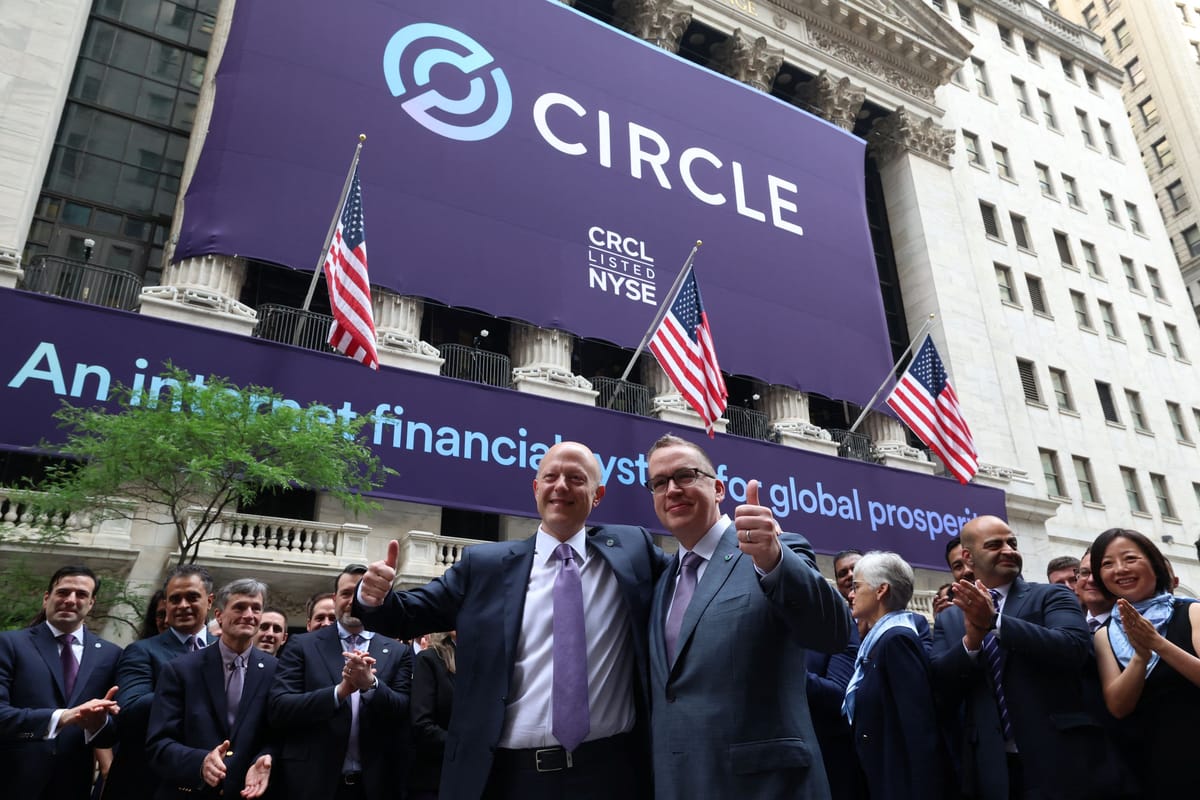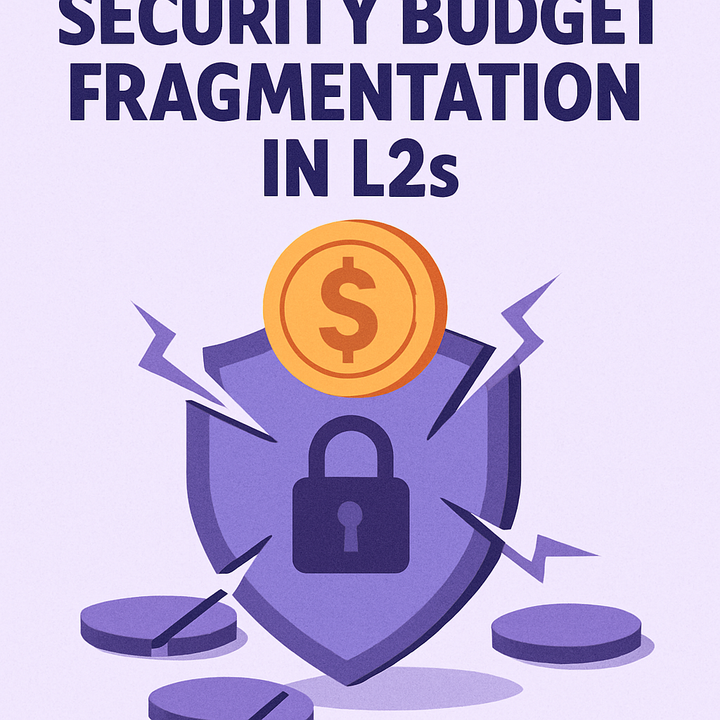Circle’s NYSE Debut: Legitimizing Stablecoins for Institutional Investors

Circle, the company behind the USDC stablecoin, made a splash with its IPO in mid-2025. USDC is a stablecoin – a type of cryptocurrency pegged 1:1 to the U.S. dollar meaning one USDC is always supposed to equal one dollar. This dollar-pegged nature makes USDC far less volatile than coins like Bitcoin. On June 4, 2025, Circle sold 34 million shares at $31 each on the NYSE, raising about $1.05 billion. The listing symbol was “CRCL”. Notably, this priced Circle at roughly $8 billion on a fully diluted basis.
From the very first day, trading was fierce. Circle’s shares more than doubled in price during the initial session – climbing as high as about $103 before settling near $85. By the end of that day, its market cap was around $16.7 billion, more than double its private valuation a few years earlier. This huge pop was fueled by demand from big investors: for example, ARK Invest committed up to $150 million, and BlackRock bought around 10% of the offering. In fact, the IPO was upsized (Circle increased the number of shares offered) due to heavy interest. In short, Circle’s entry was explosive and showed major Wall Street and fund managers were eager to get a piece of the stablecoin pie.
Several factors helped make Circle’s debut a success. First, the IPO was led by respected underwriters. J.P. Morgan, Citi, and Goldman Sachs guided the deal. Their involvement signaled confidence: these banks vetted the business and helped set the price. For everyday investors, seeing those familiar names on the prospectus could be reassuring. Second, Circle’s business is relatively transparent. It mostly earns interest on the large dollar reserves backing USDC, and it holds high-quality assets. (By contrast, Tether has faced criticism for its reserve practices.) Third, U.S. regulators have been moving toward clearer rules for stablecoins, which gave investors comfort. In fact, Reuters noted the IPO came after the White House pushed for lighter crypto regulations, effectively making stablecoin issuers like Circle more palatable to traditional finance.
- Stablecoin context: USDC is a dollar-backed crypto pegged 1:1 to USD, making Circle’s business more conservative than, say, a pure cryptocurrency exchange.
- IPO in numbers: Circle raised $1.05B at $31 per share (34 million shares).
- Top underwriters: JPMorgan, Citi, and Goldman Sachs led the deal, providing institutional credibility.
- Institutional interest: Heavy hitters like ARK Invest and BlackRock took large stakes.
- Stock pop: Circle’s share price surged 200%+ above the IPO price on day one.
A Turning Point for Crypto IPOs
Circle’s success is being called a turning point for crypto companies entering the stock market. In the weeks around the IPO, several other crypto firms filed to go public. Gemini Trust (the Winklevoss twins’ crypto exchange) filed confidentially for a U.S. IPO. Peter Thiel’s Bullish crypto exchange also filed for an IPO, with Jefferies as lead underwriter. Even the social trading platform eToro went public on Nasdaq (ticker ETOR) in May 2025, with Goldman Sachs arranging that deal. Clearly, companies that had been on the sidelines are now rushing into the light of public markets.
Financial analysts believe the driver is investor confidence returning to crypto. One strategist noted that any crypto company planning to list would be “crazy not to” after seeing Circle’s performance. The bloom didn’t come from nowhere: rising asset prices (Bitcoin is well above $100K) and political support (with the current administration pro-innovation) created a favorable backdrop. For example, Circle’s own IPO filing showed interest income on USDC reserves as its main revenue, demonstrating how traditional financial models (like earning interest on safe assets) power its growth. That kind of model appeals to conservative money managers more than the hype around memecoins or DeFi tokens.
We can see the shift by the numbers. A Reuters report explained that before, many investors had shunned crypto firms after the FTX collapse and other scandals. But now, inflows are coming back – both through spot Bitcoin ETFs and through interest in these IPOs. BlackRock and other big financial firms have even taken minor stakes in crypto companies like Paxos and Coinbase in recent years, signaling they want exposure. Circle’s IPO reinforces that trend: it formalizes the idea that a crypto company can be part of the mainstream financial system. That could lead to more banks launching their own stablecoins, or more crypto firms getting U.S. bank charters, as noted by Brookings researchers. (For example, some U.S. pension funds and 401(k) plans are already asking to invest in crypto).
In practice, this means we may see a flood of new crypto stocks. Companies like Ripple, Kraken, or asset managers planning Bitcoin funds could decide to list now. At least one expert suggested that underwriting fees will attract banks: once they smell fresh revenue from crypto IPOs, the IPO calendar could fill up with fintech and crypto names.
What This Means for Stablecoins and Investors
So why is Circle’s IPO such a big deal beyond IPO mechanics? A strong indicator is that stablecoins themselves are moving into the mainstream. As one Mitosis University analysis puts it, Circle’s debut signals that stablecoins “aren’t just a crypto niche — they’re becoming part of mainstream financial infrastructure”. For new crypto investors, this suggests that dollar-pegged tokens like USDC and regulated stablecoin issuers are seen as fundamentally different from earlier, more speculative projects. In other words, stablecoins may be here to stay, as safe bridges between traditional dollars and digital assets.
At the same time, the IPO reminded investors of some classic market lessons. One observation was that Circle’s share price surge meant the company “left money on the table.” In other words, by pricing the IPO modestly (at $24–$26 in its filing range, then $31 final), Circle raised less capital than it could have. That underpricing led to an enormous first-day gain, but also meant Circle missed out on hundreds of millions of dollars it could have gotten if the initial price had been higher. This is one downside of going public – you must balance getting a good price with the desire to see your stock jump. Some reporters called it “one of the biggest cases of IPO underpricing in recent memory.”
Finally, the Circle IPO shows that times have changed in crypto. The “crypto winter” is thawing: after many losses, retail and institutional investors alike are pouring money in again. Prices of major cryptocurrencies have recovered. The Circle IPO, nestled between rising markets and friendlier policy, is a symptom of that broader recovery. For beginner investors, the takeaway is that the crypto industry is maturing. Instead of only chasing the latest token, people are now willing to invest in underlying businesses like stablecoin issuers, platforms, and infrastructure. This could mean less extreme volatility in the future (at least for the big players), and more integration of crypto into everyday finance.
In summary, Circle’s NYSE debut was a landmark event. By attracting blue-chip banks and solid demand, it has legitimized stablecoins for institutional investors. It not only raised capital for Circle, but sent a strong signal that the crypto markets have a path to mainstream respectability. Now that the IPO floodgates are open, newcomers to crypto should watch for the next big listings – they could offer another way to participate in this ever-evolving space


Comments ()